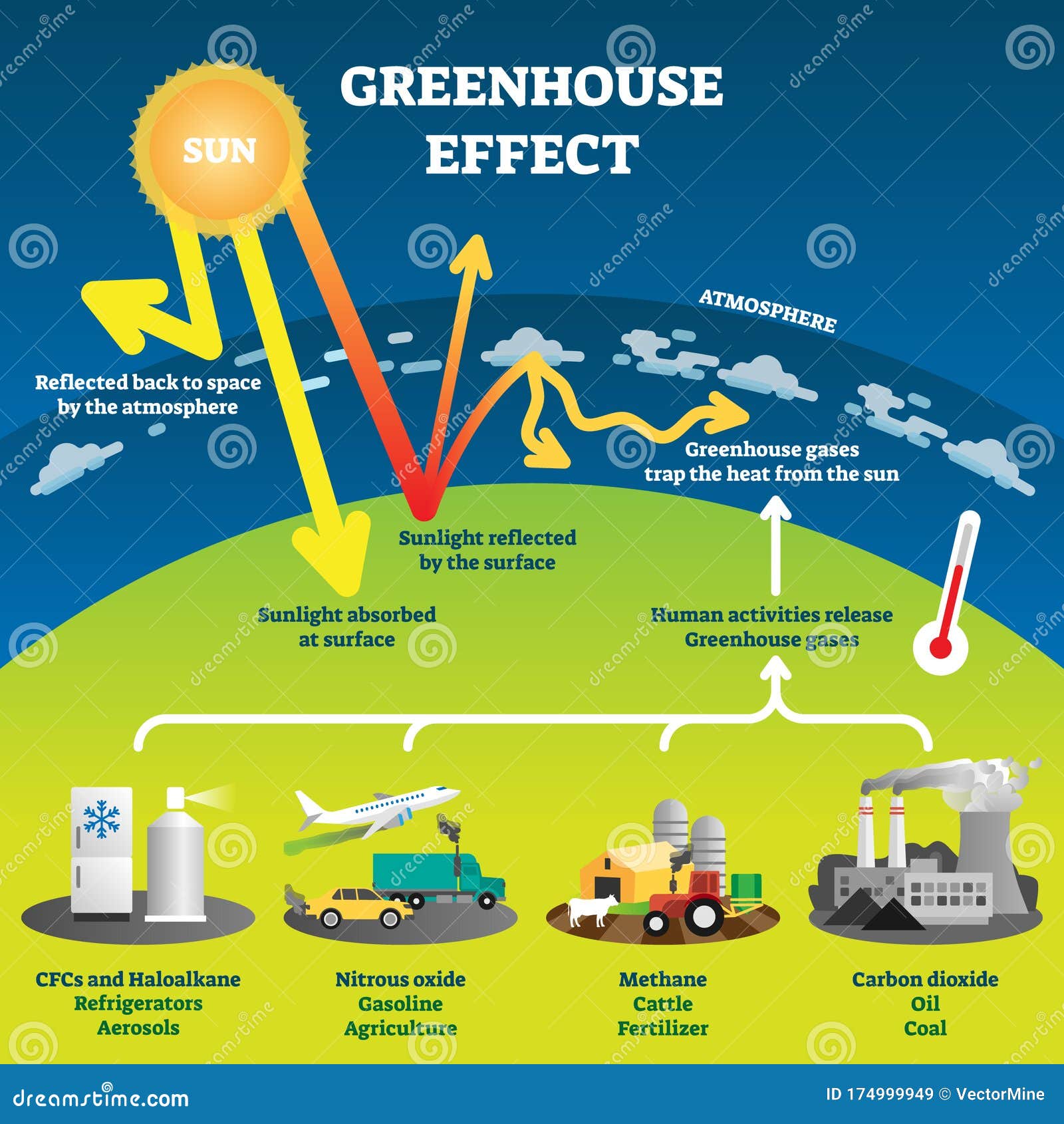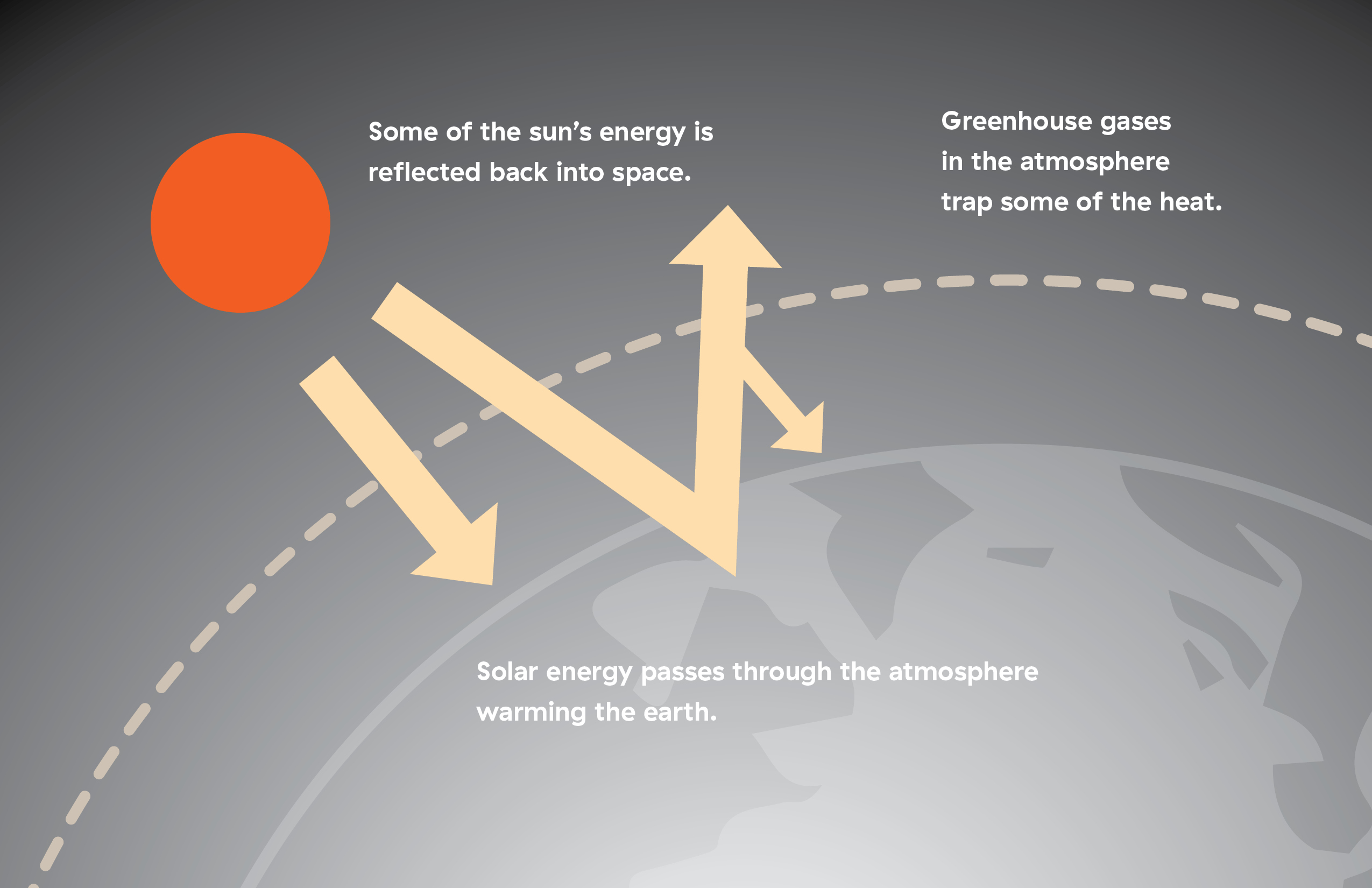Table Of Content
- The greenhouse effect
- Metrics for the greenhouse effect
- Opinion: Is planting trees on Arbor Day one way we can all fight climate change? Not so much
- Sensor network shows EVs are reducing CO2 emissions in the Bay Area. Is it enough?
- AnalysisQueensland looks to cut emissions by 75 per cent in a decade in rare show of bipartisanship

Since the 1850s, the average global surface-air temperature has risen by around 1.4 F (0.8 C), and ocean temperatures are now at the highest levels ever recorded. In 2021, the United States alone emitted 13.9 trillion pounds of greenhouse gases. For reference, that weighs more than 18,000 Empire State Buildings—and the United States is not even the biggest emitter. In 2019, China emitted nearly twice as much greenhouse gas as the United States did that year. China is the world’s top global emitter, accounting for 27.79 percent of global emissions as of 2021. By comparison, the United States accounted for 12.74 percent of emissions that same year.
The greenhouse effect
NEW CRP: Mitigating Greenhouse Gases using Radiation - International Atomic Energy Agency
NEW CRP: Mitigating Greenhouse Gases using Radiation.
Posted: Wed, 17 Apr 2024 07:00:00 GMT [source]
In the case of Earth, the Sun emits shortwave radiation (sunlight) that passes through greenhouse gases to heat the Earth's surface. In response, the Earth's surface emits longwave radiation that is mostly absorbed by greenhouse gases. The absorption of longwave radiation prevents it from reaching space, reducing the rate at which the Earth can cool off. Whether or not removing already-emitted carbon from the atmosphere is feasible, preventing future warming requires stopping the emissions of greenhouse gases.

Metrics for the greenhouse effect
About 30% of the radiation that strikes Earth is reflected back out to space by clouds, ice and other reflective surfaces. The remaining 70% is absorbed by the oceans, the land and the atmosphere, according to NASA's Earth Observatory. Due to the cutting of trees, there is a considerable increase in the greenhouse gases which increases the earth’s temperature. Electricity and heat productionThe IPCC's Fifth Assessment Report states that the burning of coal, oil, and gas to produce electricity and heat accounts for one-quarter of worldwide human-driven emissions, making it the largest single source. Although fluorinated gases are emitted in smaller quantities than other greenhouse gases (they account for 3 percent of U.S. emissions, per the EPA), they trap substantially more heat. Indeed, the GWP for these gases can be in the thousands to tens of thousands, and they have long atmospheric lifetimes, in some cases lasting tens of thousands of years.
Opinion: Is planting trees on Arbor Day one way we can all fight climate change? Not so much
No sign of greenhouse gases increases slowing in 2023 - noaa.gov
No sign of greenhouse gases increases slowing in 2023.
Posted: Fri, 05 Apr 2024 07:00:00 GMT [source]
While fluorinated gases are far less prevalent than other GHGs and do not deplete the ozone layer like CFCs, they are still very powerful. Over a 20-year period, the global warming potential of some fluorinated gases is up to 16,300 times greater than that of CO2. By trapping heat from the sun, greenhouse gases have kept Earth's climate habitable for humans and millions of other species. But those gases are now out of balance and threaten to change drastically which living things can survive on this planet—and where. Burning fossil fuels like coal and oil puts more carbon dioxide into our atmosphere.
Where do greenhouse gases come from?

Not all the greenhouse gas that we emit to the atmosphere remains there indefinitely. For example, the amount of CO2 in the atmosphere and the amount of CO2 dissolved in surface waters of the oceans stay in equilibrium, because the air and water mix well at the sea surface. When we add more CO2 to the atmosphere, a proportion of it dissolves into the oceans. Currently, some scientists are investigating how to re-engineer the atmosphere to reverse global warming. For example, theories published in the journal Science in July 2017 by lrike Lohmann and Blaž Gasparini, researchers at the Institute of Atmospheric and Climate Science at ETH Zurich in Switzerland, proposed reducing cirrus clouds that trap heat. Incoming UV radiation easily passes through the glass walls of a greenhouse and is absorbed by the plants and hard surfaces inside.
Sensor network shows EVs are reducing CO2 emissions in the Bay Area. Is it enough?
The total radiative forcing by anthropogenic CO2 emissions since the beginning of the industrial age is approximately 1.66 watts per square metre. It is the phenomenon of a gradual increase in the average temperature of the Earth’s atmosphere. The main cause for this environmental issue is the increased volumes of greenhouse gases such as carbon dioxide and methane released by the burning of fossil fuels, emissions from the vehicles, industries and other human activities. Water vapour is the most potent greenhouse gas in Earth’s atmosphere, but its behaviour is fundamentally different from that of the other greenhouse gases.
Greenhouse gases help keep the Earth at a habitable temperature — until there is too much of them. Cement manufacture contributes CO2 to the atmosphere when calcium carbonate is heated, producing lime and CO2. The greenhouse effect occurs in the atmosphere, and is an essential part of How the Earth System Works. Click the image on the left to open the Understanding Global Change Infographic. Locate the greenhouse effect icon and identify other topics that cause changes to, or are affected by, the greenhouse effect. There's a delicate balancing act occurring every day all across the Earth, involving the radiation the planet receives from space and the radiation that's reflected back out to space.
Global warming is often described as the most recent example of climate change. Typically, a planet will be close to radiative equilibrium, with the rates of incoming and outgoing energy being well-balanced. Under such conditions, the planet's equilibrium temperature is determined by the mean solar irradiance and the planetary albedo (how much sunlight is reflected back to space instead of being absorbed).
What are greenhouse gases?
In terms of the amount of heat these gases can absorb and re-radiate (known as their global warming potential or GWP), CH4 is 23 times more effective and N2O is 296 times more effective than CO2. However, there is much more CO2 in the Earth’s atmosphere than there is CH4 or N2O. The CO2 released from the burning of fossil fuels is accumulating as an insulating blanket around the Earth, trapping more of the Sun’s heat in our atmosphere. Actions carried out by humans are called anthropogenic actions; the anthropogenic release of CO2 contributes to the current enhanced greenhouse effect[1]. ‘Greenhouse gases’ are crucial to keeping our planet at a suitable temperature for life. Without the natural greenhouse effect, the heat emitted by the Earth would simply pass outwards from the Earth’s surface into space and the Earth would have an average temperature of about -20°C.
Effects include increases in the frequency and intensity of extreme weather events – including flooding, droughts, wildfires and hurricanes – that affect millions of people and cause trillions in economic losses. Rising sea levels cause flooding in coastal cities, which could displace millions of people in low-lying areas such as Bangladesh, the U.S. state of Florida, and the Netherlands. The Greenhouse Effect and Climate ChangeEven slight increases in average global temperatures can have huge effects. Simplified models are sometimes used to support understanding of how the greenhouse effect comes about and how this affects surface temperature. A simple picture assumes a steady state, but in the real world, the day/night (diurnal) cycle, as well as the seasonal cycle and weather disturbances, complicate matters.
Acting just like the glass walls of a greenhouse, gases like carbon dioxide, methane, and nitrous oxide trap the sun’s heat in the atmosphere and prevent it from escaping into space. Learn why the world is getting warmer in this free climate change resource. Other greenhouse gases, such as carbon dioxide, are emitted by human activity, at an unnatural and unsustainable level, but the molecules do occur naturally in Earth's atmosphere. The greenhouse effect happens when certain gases, which are known as greenhouse gases, accumulate in Earth’s atmosphere. Greenhouse gases include carbon dioxide (CO2), methane (CH4), nitrous oxide (N2O), ozone (O3), and fluorinated gases.
It’s clear that decision makers, companies, leaders, and activists across the country and around the world staunchly believe we must all act on climate change. For just as the greenhouse gas emissions from a century ago are inducing the climate change we see now, the emissions we release today will impact us long into the future. Reducing our greenhouse gas emissions will require significant effort at the international, national, and local levels. First and foremost, we must slash fossil fuel production, consumption, and pollution by ramping up our use of clean, renewable energy and energy-efficient technologies and by investing in fuel-efficient and electric vehicles. The greenhouse effect is also expected to warm the worlds of other star systems. Many astronomers speak of a narrow habitable zone around a star — the area where a planet would be at the perfect distance to maintain liquid water on its surface, between 0.95 and 1.4 times the Earth-sun distance.
Simulations suggest that the planet's average temperatures ranged from a low of 68 F (20 C) to a high of 122 F (50 C) for about 3 billion years, potentially even allowing Venus to support life. Visible light from the sun, as well as invisible ultraviolet and infrared wavelengths, can penetrate the gaseous layer that blankets our world. Roughly 70% of these energetic rays are absorbed by Earth's oceans, land and atmosphere, while the remaining 30% are immediately reflected back into space, according to NASA Earth Observatory. The report found that GHG emissions need to be halved by 2030, if we are to limit global warming to 1.5°C compared to pre-industrial levels by the end of the century.
The last time global atmospheric CO2 amounts were this high was 3 million years ago, when temperatures were up to 5.4 degrees F (3 degrees C) higher than during the pre-industrial era. As a result of modern-day CO2-induced global warming, 2016 was the warmest year on record, with 2019 and 2020 ranking as the next warmest, respectively. In fact, the six hottest years on record have all occurred since 2015, according to the World Meteorological Organization. Altogether, this cycle of absorption and re-radiation by greenhouse gases impedes the loss of heat from our atmosphere to space, creating the greenhouse effect. Increases in the amount of greenhouses gases will mean that more heat is trapped, increasing the amount of energy in the Earth system (Earth’s energy budget), and raising Earth’s temperature. This increase in Earth’s average temperature is also known as global warming.

No comments:
Post a Comment